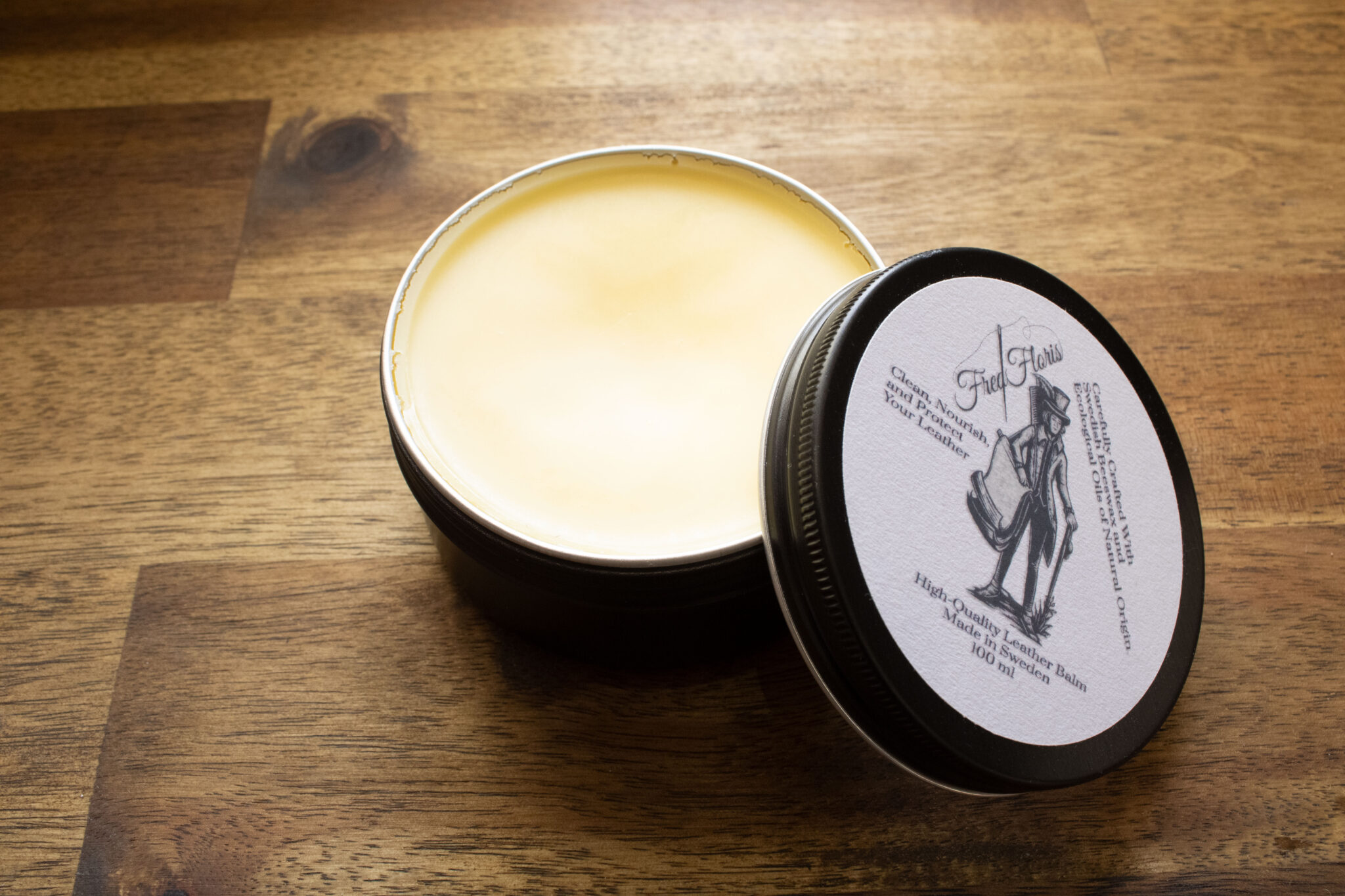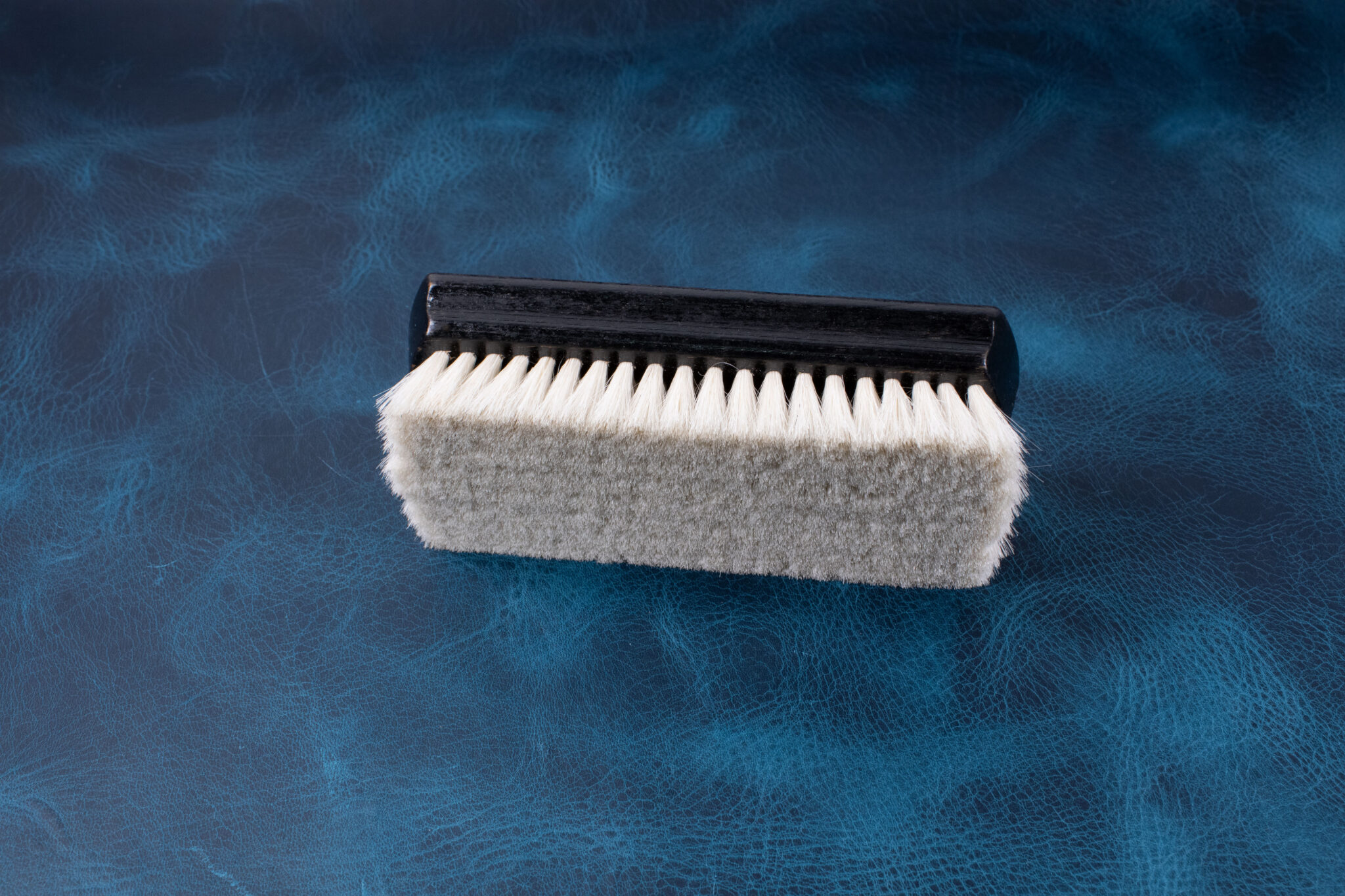By: Charles & Fred
Leather, with its rich and luxurious appeal, demands an approach to cleaning that balances effectiveness with gentleness. The process of cleaning leather is not merely a step-in maintenance but a knowledge that, when mastered, can enhance the longevity and aesthetic appeal of your cherished leather products.

Understanding Leather: A Prerequisite to Effective Cleaning
Leather tells a story like no other material can. Each crease, patina, and texture narrates tales of adventures embarked upon and moments cherished. However, to ensure that these stories are preserved and continue to unfold, one must embark on a journey of regular and mindful leather care.
Before diving into cleaning techniques, it’s pivotal to understand the type of leather you’re dealing with. Different types of leather, such as aniline, semi-aniline, and pigmented leather, each have unique characteristics and, consequently, cleaning requirements. Identifying the leather type ensures that the cleaning method employed is both safe and effective. Our guide focuses on aniline and semi-aniline vegetable tanned leather
The Trilogy of Leather Care: Clean, Condition, Protect
The essence of leather care can be distilled into three fundamental steps: cleaning, conditioning, and protecting. Each step, while simple in its approach, requires a delicate balance of knowledge and craftsmanship to ensure the maintenance of the leather’s integrity.
1. Cleaning: Gentle cleaning to remove accumulated dirt and impurities is paramount. A soft brush, like our goat hair brushes, crafted in Germany, can be a quintessential tool in this step, ensuring that the leather is cleaned without being subjected to potential damage.
2. Conditioning: Leather, akin to skin, requires nourishment to retain its suppleness and prevent dryness. A high-quality leather balm, like our own, can provide the requisite nourishment.
3. Protecting: Ensuring that leather is protected from environmental factors like moisture and UV rays is crucial to its longevity. A protective layer, often provided by a quality leather balm, shields it from potential harm.

A high-quality leather balm, like our own High-Quality Leather Balm, crafted using only organic and ecological raw materials, can provide the requisite nourishment. Ensuring your leather products continue to narrates their tales with enduring elegance and grace.
Delving Deeper into Leather Cleaning Techniques: A Comprehensive Guide
The Gentle Art of Dusting

1. Regular Dusting: Begin with a gentle dusting using a soft, dry cloth or a brush with soft bristles. The FredFloris Leather Brush, crafted with premium white goat hair, exemplifies delicate cleaning. It ensures the leather is cleaned without inflicting scratches or damage.
2. Vacuuming: For crevices and hard-to-reach areas, a vacuum cleaner with a brush attachment can be employed to remove accumulated dust and debris without causing harm to the leather.
Addressing the Unintended Spills and Stains
1. Immediate Action: Address spills immediately with a dry cloth, blotting gently to prevent the liquid from spreading or seeping into the leather.
2. Mild Soap Solution: For stubborn spots, a mild soap solution can be used. Ensure a test is done on a hidden area to prevent unintended discoloration. Apply the solution with a soft cloth, gently working on the stain, and subsequently, dry with a clean cloth.
3. Specialized Cleaners: Utilize leather cleaners for persistent stains, ensuring they are applied as per the instructions and are suitable for your leather type.
Addressing Unique Challenges
1. Ink Stains: Consider using specialized ink removers or rubbing alcohol applied with a cotton swab. Always perform a spot test to ensure no discoloration occurs.
2. Mold and Mildew: A mixture of water and rubbing alcohol in equal parts can be used to wipe away mold and mildew, ensuring to dry the leather thoroughly afterward.
We always recommend checking with the product manufacturer or a professional before attempting stain removal.
Conclusion: The Harmony of Technique and Product
Effective leather cleaning is a harmonious blend of technique and product. Incorporating quality products, such as a leather balm and a good brush, into a well-informed cleaning technique ensures your leather items are not only impeccably clean but also continue to age with grace.
In the realm of leather care, every stroke of the brush and application of the balm is a step towards preserving and enhancing the stories that leather tells. Through mindful cleaning practices, we become active participants in the timeless narrative of our leather items, ensuring they continue to enchant with their enduring beauty.
